#historic canal house
Photo

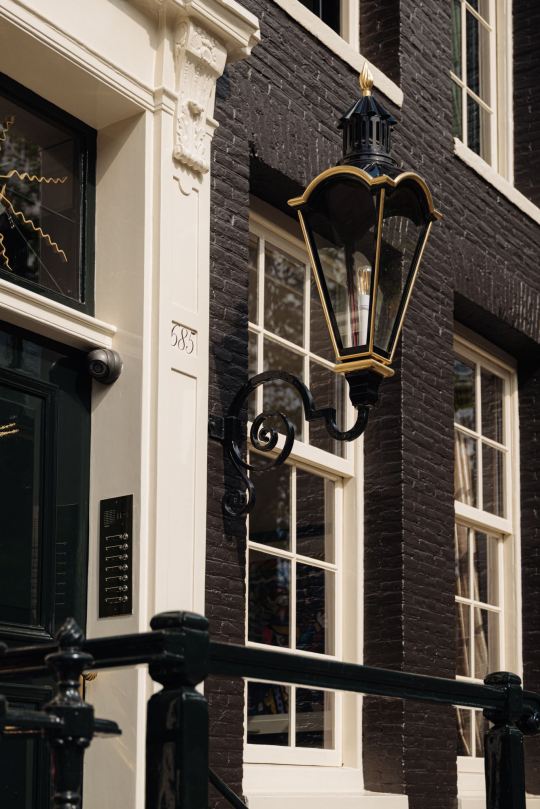
In love with this renovated 1715 canal house in Amsterdam, submitted by Ingek73. It has 12bds. plus 2 baths, 6 showers and 5 toilets. €5,9M / $6.382M
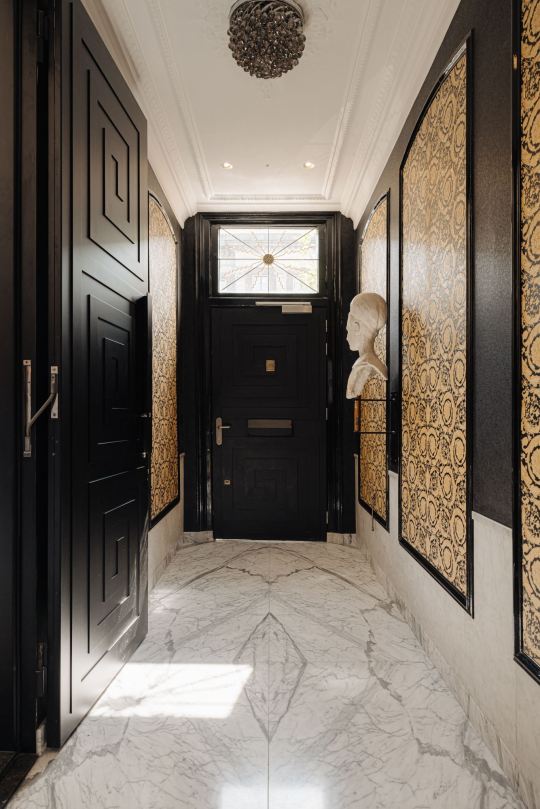
Beautiful entrance hall. The first floor can be reached through the basement. The entrance has a beautiful Calacatta marble floor with underfloor heating.


The living room is located at the rear, equipped with a cozy fireplace and has 2 pairs of patio doors to the backyard.

Look at that stunning staircase.

Dining room.
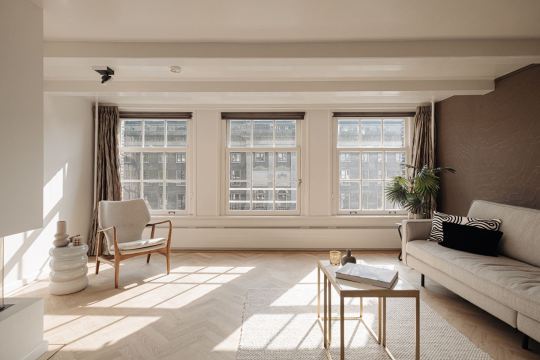
The third floor, also accessible by elevator and stairs, has a spacious living room at the front.


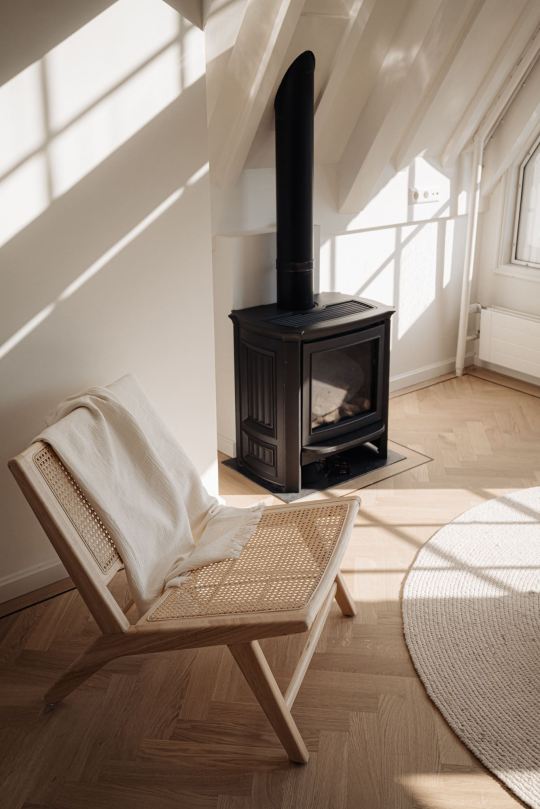

Isn’t this dreamy? It’s a studio apt. with a kitchenette.

Cute loft space.
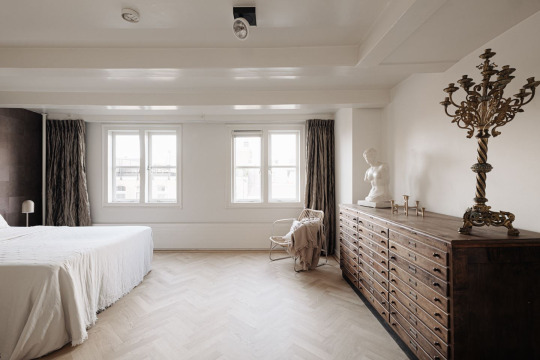
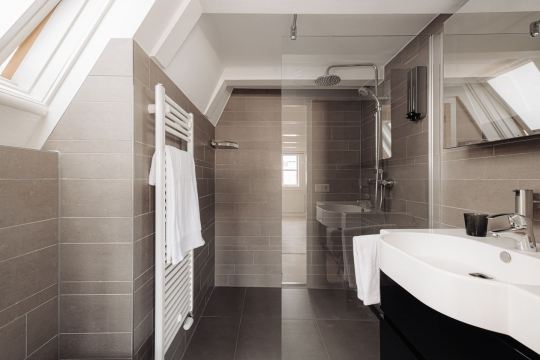
One of the other bds. and baths.

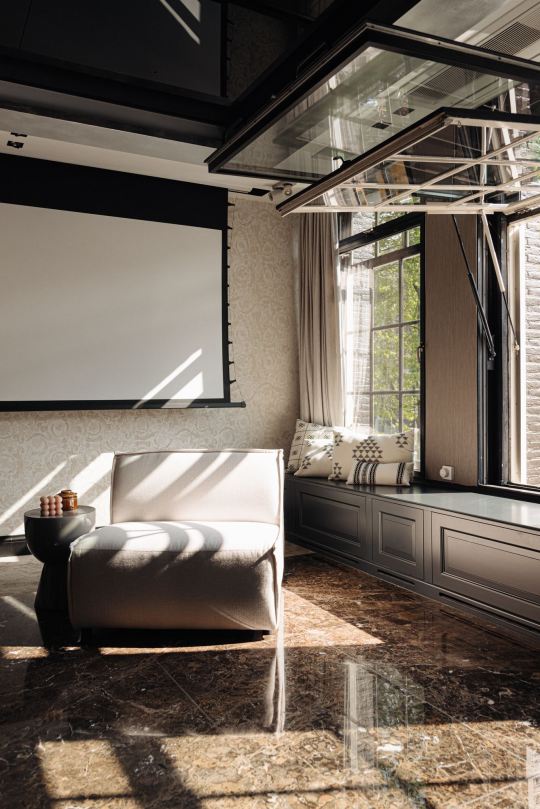

Access by elevator or stairs to the first floor where 2 spacious rooms are located, equipped with atmospheric gas fireplaces,

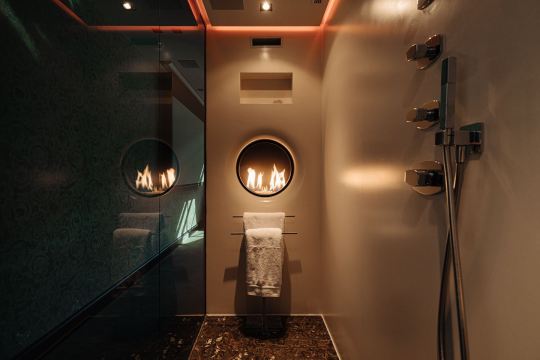
Beautiful bathroom with double showers and gas fireplaces.
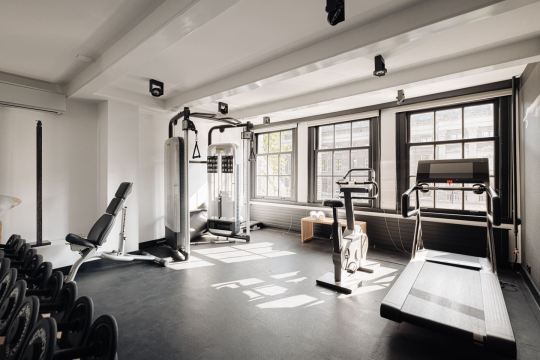

The second floor is currently being used as a spacious home gym, but again consists of 2 spacious rooms with a bathroom.

Entrance to a bonus space from the garden.
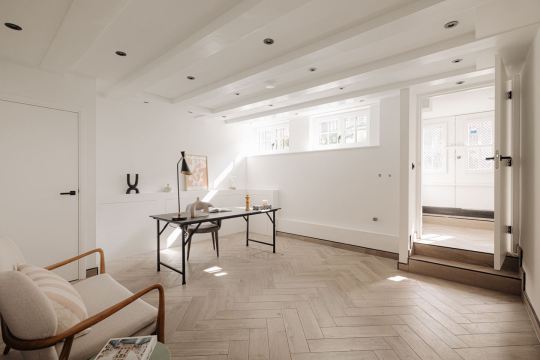

They deepened the basement floor and it can be used for an office or extra bedrooms.


Beautifully landscaped backyard with luxurious garden house. The garden house is completely insulated, heated and supplied with water.
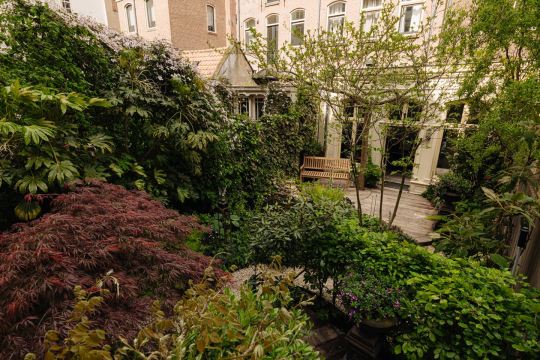
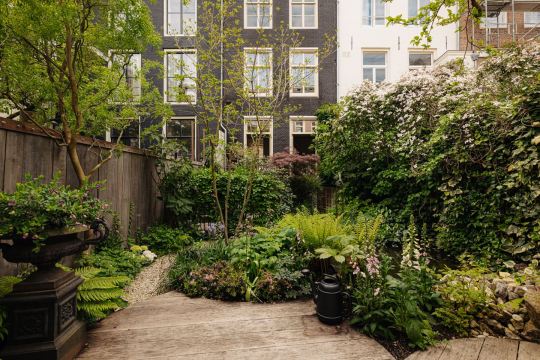
Lush green gardens.

One of the boats on the canal.
https://www.funda.nl/koop/amsterdam/huis-42116842-prinsengracht-685/
163 notes
·
View notes
Text





Cathédrale Notre-Dame-de-Strasbourg (2) (3) (4) (5) by Anna Nielsson
Via Flickr:
www.annajanephoto.com
(1) La Petite France
(3) (4) (5) Ponts Couverts
#canals#waterways#traditional house#historic buildings#doors#decorative elements#rivers#bridges#towers#france#grand est
8 notes
·
View notes
Text

Amsterdam, Netherlands (by Matias North)
See more of Amsterdam | Netherlands | Europe.
#amsterdam#netherlands#europe#travel#wanderlust#explore#canal#canals#boat#boats#canal boat#streetscape#historic architecture#architecture#terrace house#holland#li_destinations#travel photography
21 notes
·
View notes
Text
"The Lower Ninth Ward of New Orleans has recently witnessed an incredible eco-renaissance following decades of damage and neglect.
Led by a local community development group, a 40-acre wetlands park has been restored to glories past with hundreds of local trees that attract over a hundred species of birds, plus joggers, picnickers, and nature lovers besides.
The story begins with Rashida Ferdinand, founder of Sankofa Community Development Corporation (CDC). Growing up in this historic part of New Orleans, where Black homeownership thrived, where Fats Domino was born, and where locals routinely went out into the wetlands to catch fish and crustaceans, she watched as it suffered from years of neglect.
Poor drainage, ruined roads, illegal trash dumping, and unmitigated damage from hurricanes slowly wasted the wetland away until it was a derelict eyesore.
In the name of restoring this wild heritage indicative of the culture in the Lower Ninth, and in order to protect her communities from flooding, Ferdinand founded the Sankofa CDC, and in 2014 entered into an agreement with the City of New Orleans for the restoration of Sankofa—a 40-acre section of neglected wetlands in the heart of the Lower Ninth.
The loss of Sankofa’s potential to dampen flooding from storms meant that over the years dozens of houses and properties were flooded and damaged beyond the ability of the inhabitants to recover. Forced out by a combination of nature’s fury and government failure, the cultural heritage of the community was receding along with the floodwaters.
Ferdinand knew that restoring natural flood barriers like Sankofa was key to protecting her community.
“Hurricane protection is a major concern in the community, but there’s a lack of trust in the infrastructure systems that are supposed to protect us,” Ferdinand told the Audubon Society.
Today, Sankofa Wetlands Park is a sight to behold. Hiking trails snake through a smattering of ponds and creeks, where bald cypresses and water tupelo trees continue to grow and cling to the ground even during storms. Picnic benches have appeared, wheelchair-accessible trails connect sections of the park to parts of the Lower Ninth, and local businesses are seeing more visitors.
It needed a lot of work though. Thousands of invasive tallow trees had to be uprooted. 27,000 cubic meters of illegally dumped trash compacted into the dirt had to be removed. A 60-year-old canal dug by the US Army Corps of Engineers had to be disconnected, and all new native flora had to be planted by hand.
Audubon says that Ferdinand routinely can’t believe her eyes when she looks at the transformation of Sankofa into its current state.
“Seeing butterflies, birds, and other pollinators in the park is a sign of a healthy ecosystem,” she says. “All we had to do was create the right conditions.”
Slated for official completion in 2025 with an outdoor amphitheater, interpretive signage, and additional trails, Ferdinand and the CDC have their eyes set on an even larger area of wetlands to the north of Sankofa.
Along the way, Ferdinand and the CDC attracted many helping hands, and entered into many partnerships, But the catalyst for change arose from the spirit and determination of one woman in the right place at the right time, for the benefit of hundreds in this historic heart of a historic city."
-via Good News Network, September 17, 2024
#new orleans#louisiana#nola#united states#wildlife#wetlands#ecology#ecological restoration#conservation#good news#hope
2K notes
·
View notes
Note
Hey bestie whats a narrow boat? I saw you tag that on something you reblogged and I'm pretty curious now!



- Terry Darlington, Narrow Dog to Carcassone
A narrowboat (all one word) is a craft restricted to the British Isles, which are connected all over by a nerve-map of human-made canals. To go up and down hills, the canals are spangled with locks (chambers in which boats can be raised or lowered by filling or emptying them with water.) As Terry says above, the width of the locks was somewhat randomly determined, and as a result, the British Isles have a narrow design of lock - and a narrowboat to fit through them. A classic design was seventy feet long and six feet wide. Starting in the 18th century, and competing directly with trains, canal “barges” were an active means of transport and shipping. They were initially pulled along the towpaths by horses, and you can still see some today!
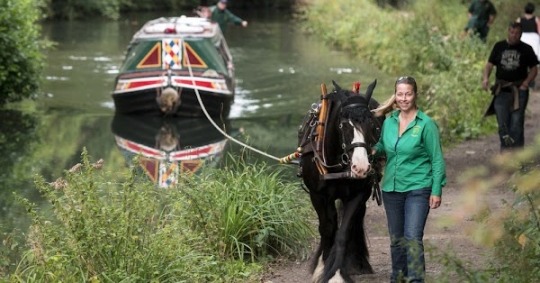
Later, engines were developed.
Even after the trains won the arms race, it was a fairly viable freight service right up until WW2. It’s slow travel, but uses few resources and requires little human power, with a fairly small crew (of women, in WW2) being capable of shifting two fully laden boats without consuming much fossil fuel.
In those times the barges were designed with small, cramped cabins in which the boaters and their families could live.
During its heyday the narrowboat community developed a style of folk art called “roses and castles” with clear links to fairground art as well as Romani caravan decor. They are historically decorated with different kinds of brass ornaments, and inside the cabins could also be distinctively painted and decorated.
Today, many narrowboats are distinctively decorated and colorful - even if not directly traditional with “roses and castles” they’ll still be bright and offbeat. A quirky name is necessary. All narrowboats, being boats, are female.
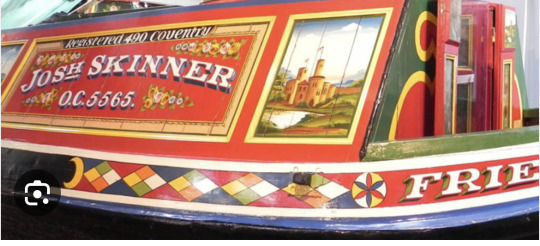

After a postwar decline, interest in the waterways was sparked by a leisure movement and collapsing canals were repaired. Today, the towpaths are a convenient walking/biking trail for people, as they connect up a lot of the mainland of the UK, hitting towns and cities. Although the restored canals are concrete-bottomed, they’re attractive to wildlife. Narrowboats from the 1970s onward started being designed for pleasure and long-term living. People enjoy vacationing by hiring a boat and visiting towns for a cuter, comfier, slower version of a campervan life. And a liveaboard community sprang up - people who live full-time on boats. Up until the very restrictive and nasty laws recently passed in the UK to make it harder for travelling peoples (these were aimed nastily at vanlivers and the Romani, and successfully hit everyone) this was one of the few legal ways remaining to be a total nomad in the UK.
Liveaboards can moor up anywhere along the canal for 28 days, but have to keep moving every 28 days. (Although sorting out the toilet and loading up with fresh water means that a lot of people move more frequently than that.) you can also live full-time in a marina if they allow it, or purchase your own mooring. In London, where canal boats are one of the few remaining cheapish ways to live, boats with moorings fetch the same prices as houses. It can be very very hard for families to balance school, parking, work, and all the difficulties of living off-grid- but many make it work. It remains a diverse community and is even growing, due to housing pressures in the UK. Boats can be very comfortable, even when only six feet wide. When faced with spending thousands of pounds on rent OR mooring up on a nice canal, you can see why it seems a romantic proposition for young people, and UK television channels always have slice-of-life documentaries about young folks fixing up their very own quirky solar-powered narrowboat. I don’t hate; I did it myself.
If you’re lucky, you might even meet some of the cool folks who run businesses from their narrowboats: canal-side walkers enjoy bookshops, vegan bakeries, ice-cream boats, restaurants, artists and crafters. There are Floating Markets and narrowboat festivals. It’s generally recognised that boaters contribute quite a lot to the canal - yet there are many tensions between different kinds of boaters (liveaboards vs leisure boaters vs tourists) as well as tensions with local settled people, towpath users like cyclists, and fishermen. I could go on and on explaining this rich culture and dramas, but I won’t.
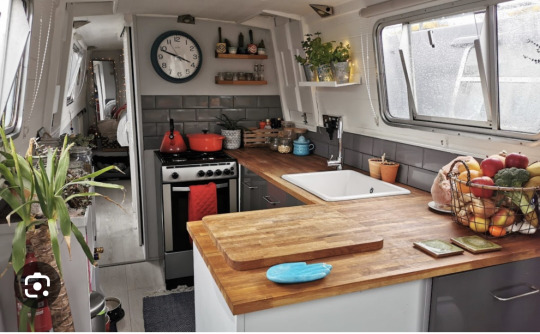

Phillip Pullman’s Gyptians are a commonly cited example of liveaboards - although they were based on the narrowboat liveaboards that Pullman knew in Oxford, their boats are actually Dutch barges. Dutch barges make good homes but are too wide to access most of the midlands and northern canals, and are usually restricted to the south of the UK. So they’re accurate for Bristol/London/Oxford, and barges are definitely comfier to film on. (Being six feet wide is definitely super awkward for a boat.) but in general Dutch barges are less common, more expensive and can’t navigate the whole system.

However, apart from them, there are few examples of narrowboat depictions that escaped containment. So it’s quite interesting that there is an entire indigenous special class of boat, distinctive and highly specialised and very cute, with an associated culture and heritage and folk art type, known to all and widely celebrated, and ABSOLUTELY UNKNOWN outside of the UK - a nation largely known around the world for inflicting its culture on others. They’re a strange, sweet little secret - and nobody who has ever loved one can resist pointing them out for the rest of their lives, or talking about them when asked to. Thank you for asking me to.
6K notes
·
View notes
Text

September 19, 2023, marks one of the darkest chapters in Armenia's modern history.
As a result of another large-scale military aggression by azerbaijan, the entire population of Artsakh, native to the land for over 3000 years, was subjected to ethnic cleansing and was forced to leave their homeland. This operation followed a nearly 9-month blockade of the Lachin Corridor, the only land route connecting Artsakh to Armenia. The blockade created a severe humanitarian crisis, cutting off food, medical supplies, and other necessities for the people of Artsakh. Even after nine months of illegal blockade, the armed forces of Artsakh fought with exceptional heroism in defense of the homeland, inflicting heavy losses on the enemy.
While ethnic cleansing was taking place, the azeri government arrested eight former members of Artsakh’s government and advocates for the self-determination of Artsakh, including Ruben Vardanyan, an influential Armenian philanthropist who in 2024 was nominated for Nobel Peace Prize.
Mr. Vardanyan and the seven others join over 50 Armenians arrested during the conflict, some of whom have been held for years by azerbaijan. Anyone acquainted with azerbaijan would not be shocked to learn that political prisoners are held in conditions that breach basic standards for the treatment of detainees.
The occupation of the Republic of Artsakh has resulted in staggering material losses, impacting both cultural heritage and essential infrastructure. The recorded damage includes:
12 cities
241 villages
13,550 houses (30% over 100 years old)
11,450 apartments
60 factories
15 plants
200 cultural centers
9 cultural hubs
25 museums
232 schools
7 colleges
4 universities
11 art schools
400 medieval cemeteries
385 churches
60 monastic complexes
2,385 khachkars (cross-stones)
4 reservoirs
5 canals
37 hydroelectric power stations
48 mines
11 hospitals
230 medical centers
This extensive damage reflects not just a loss of property, but an assault on the cultural identity and historical legacy of the region.
Eternal glory to the Armenian heroes who sacrificed all for their nation and their homeland.
#artsakh is armenia#artsakh#azeri crimes#genocide#turkish crimes#break the chain of ignorance#world politics#world history#armenia#armenian history#baku#azerbaijan#turkish tv series#turkish drama
392 notes
·
View notes
Text
Birds Sing Anew After Residents of New Orleans Ninth Ward Restore 40-Acre Wetland to Historic Glory https://www.goodnewsnetwork.org/birds-sing-anew-from-within-40-acre-wetland-restored-by-residents-of-n-orleans-historic-lower-ninth/

The Lower Ninth Ward of New Orleans has recently witnessed an incredible eco-renaissance following decades of damage and neglect.
Led by a local community development group, a 40-acre wetlands park has been restored to glories past with hundreds of local trees that attract over a hundred species of birds, plus joggers, picnickers, and nature lovers besides.
The story begins with Rashida Ferdinand, founder of Sankofa Community Development Corporation (CDC). Growing up in this historic part of New Orleans, where Black homeownership thrived, where Fats Domino was born, and where locals routinely went out into the wetlands to catch fish and crustaceans, she watched as it suffered from years of neglect.
Poor drainage, ruined roads, illegal trash dumping, and unmitigated damage from hurricanes slowly wasted the wetland away until it was a derelict eyesore.
In the name of restoring this wild heritage indicative of the culture in the Lower Ninth, and in order to protect her communities from flooding, Ferdinand founded the Sankofa CDC, and in 2014 entered into an agreement with the City of New Orleans for the restoration of Sankofa—a 40-acre section of neglected wetlands in the heart of the Lower Ninth.
The loss of Sankofa’s potential to dampen flooding from storms meant that over the years dozens of houses and properties were flooded and damaged beyond the ability of the inhabitants to recover. Forced out by a combination of nature’s fury and government failure, the cultural heritage of the community was receding along with the floodwaters.
Ferdinand knew that restoring natural flood barriers like Sankofa was key to protecting her community.
“Hurricane protection is a major concern in the community, but there’s a lack of trust in the infrastructure systems that are supposed to protect us,” Ferdinand told the Audubon Society.
Today, Sankofa Wetlands Park is a sight to behold. Hiking trails snake through a smattering of ponds and creeks, where bald cypresses and water tupelo trees continue to grow and cling to the ground even during storms. Picnic benches have appeared, wheelchair-accessible trails connect sections of the park to parts of the Lower Ninth, and local businesses are seeing more visitors.
Visiting birders have recorded sightings of over 100 species of songbirds, ducks, near-shore waders of all kinds, egrets, and herons, and the park also acts as a home and refuge for otters, beavers, and a variety of amphibians and reptiles.
It needed a lot of work though. Thousands of invasive tallow trees had to be uprooted. 27,000 cubic meters of illegally dumped trash compacted into the dirt had to be removed. A 60-year-old canal dug by the US Army Corps of Engineers had to be disconnected, and all new native flora had to be planted by hand.
Audubon says that Ferdinand routinely can’t believe her eyes when she looks at the transformation of Sankofa into its current state.
“Seeing butterflies, birds, and other pollinators in the park is a sign of a healthy ecosystem,” she says. “All we had to do was create the right conditions.”
Slated for official completion in 2025 with an outdoor amphitheater, interpretive signage, and additional trails, Ferdinand and the CDC have their eyes set on an even larger area of wetlands to the north of Sankofa.
Along the way, Ferdinand and the CDC attracted many helping hands, and entered into many partnerships, But the catalyst for change arose from the spirit and determination of one woman in the right place at the right time, for the benefit of hundreds in this historic heart of a historic city.
#new orleans#good news#environmentalism#science#environment#nature#usa#restoration#rewilding#wetlands#conservation#climate change#climate crisis#animals#birds#trees#disaster prevention and preparedness
159 notes
·
View notes
Text
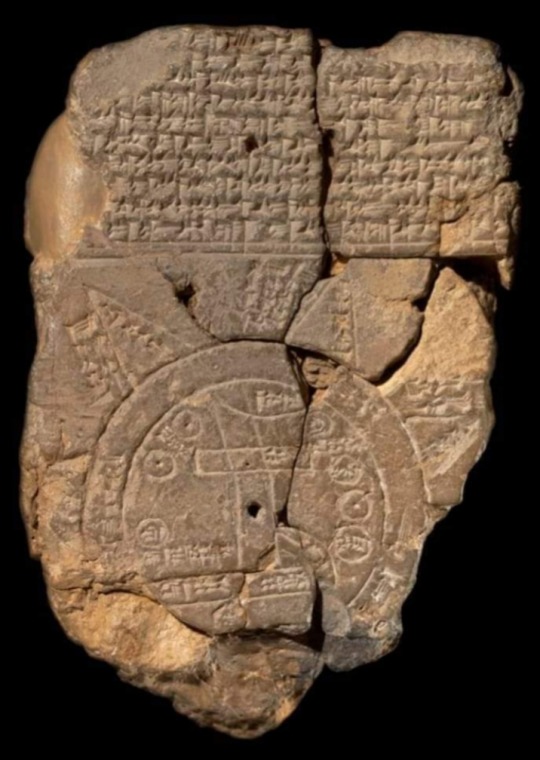
Babylonian Map of the World (6th century BC), also known as Imago Mundi, is oldest clay tablet map written in Akkadian.
The tablet describes the oldest known depiction of the known world.
It was discovered at Sippar, southern Iraq, 60 miles north of Babylon on east bank of Euphrates River.
This map not only serves as a historical record of the region's geography but also includes mythological elements, providing a comprehensive view of the ancient Babylonian worldview.
Today, the Babylonian Map of the World is housed in the British Museum, where it continues to be a valuable artifact for understanding the ancient past.
Details of the map:
1. “Mountain” (Akkadian:šá-du-ú)
2. “City” (Akkadian: uru)
3. Urartu (Armenia) (Akkadian: ú-ra-áš-tu)
4. Assyria (Akkadian: kuraš+šurki)
5. Der (Akkadian: dēr)
6. Swamp (Akkadian: ap–pa–ru)
7. Elam (Akkadian: šuša)
8. Canal (Akkadian: bit-qu)
9. Bit Yakin (Akkadian:bῑt-ia-᾿-ki-nu)
10. “City” (Akkadian: uru)
11. Habban (Akkadian: ha-ab-ban)
12. Babylon (Akkadian: tin.tirki), divided by Euphrates
13. Ocean (salt water, Akkadian:idmar-ra-tum)
#Babylonian Map of the World#Imago Mundi#clay tablet map#clay tablet#Akkadian#Sippar#Iraq#British Museum#history#mythology#map#Archaeo Histories#Ancient Babylon#Babylonia#geography#artifact
540 notes
·
View notes
Text
I think there's a huge gap in language when talking about British legislative and social racism bc some of the most overt and unchallenged legislative racism lately is against GRT people and a lot of countries (especially America) do not use the term GRT.
The G in GRT stands for Gypsy (using this bc it's as-self-described, like it's the term the British GRT community uses often) and bc this is for a lot of people exclusively a slur and bc it has a lot of historical weight, people will often object to use of the expanded acronym slash try to correct it to Roma or Rroma.
But the GRT community as a political class and as a group subject to racism includes, but is not synonymous with, Roma, cause it also includes Irish Travelers (who are another large nomadic minority ethnic group, aka Pavee), Scottish, English and Welsh Travelers (a mix of indigenous nomadic groups), and other nomadic peoples in Britain.
In some, but not all, contexts, GRT also includes non-ethnic nomadic communities: New Age Travelers (people living nomadic lifestyles by choice - full-time caravanners or van lifers), Bargees (people living full time in canal boats) and showmen (traveling funfairs and circuses). Not being a specific ethnicity, New Agers and Showmen have a different relationship to racism and marginalisation than Roma and Travelers (a settled Roma or Traveler family are still Roma or Traveler, it's not just a question of lifestyle and community) but obviously anti-Traveler legislation and bias harms everyone living nomadically.
I think (and I'm not GRT and my thoughts should be taken with a truckload of salt, I just feel like it's worth explaining what the terminology actually means) that a lot of the nuance around GRT identity is kind of lost in transnational discourse (particularly with Americans) because. the G bit of GRT has been used as a blanket term for hundreds of years to refer to multiple groups of nomadic peoples in Europe and so there are ethnocultural groups included under that term who aren't Roma but also are GRT and are racialised as GRT.
People racialised within the GRT community (as Roma or Travelers) experience way higher rates of social and economic exclusion than any other ethnogroups in the UK, including if they're settled (living in brick-and-mortar housing, which around 75% of people recorded as GRT do).
Both Roma and Traveler kids are systemically excluded from education (Gypsy/Roma kids are 6x more likely to be suspended from school and 7x as likely to be expelled than the national average, and Traveler kids aren't much better off (4x more likely than average to be suspended and 5x as likely to be expelled)). GRT people face systemic employment discrimination, being 6x more likely than average to be long term unemployed and 1/4 as likely to be offered high-level or management positions. GRT folk have the worst health outcomes of any ethnic group, and consistently report high levels of medical discrimination and trouble accessing healthcare. As a result, GRT infant mortality and maternal death is way higher than average, and GRT life expectancy is 10+ years shorter than average. GRT communities are disproportionately criminalised, settled GRT families have spoken often about having been treated as inherently suspicious on the basis of their ethnicity.
A lot of people write these issues off as being, like, a product of a nomadic/no-fixed-address lifestyle, but a) it's a problem with the system if our social care systems don't account for the fact that some people are nomadic, itinerant or have no fixed address. there is no reason why nomadic life needs to be more dangerous or excluded than settled. but also b) as stated a majority of GRT people included in these figures do have fixed addresses. it is just racism.
Homelessness is also a huge problem in the community, with many landowners refusing to rent land to Travellers, residential camping berths being oversubscribed by something like 10,000%, and significant difficulty accessing affordable housing. The land which is available to Traveling communities is increasingly ringfenced, often specifically with the intention of discouraging nomadic communities.
given that it is. racism. with an exceptionally long and brutal history of genocide, criminalisation and systemic social exclusion. it is also striking how often open, sometimes genocidal, racism against GRT people is handwaved or accepted as normal. anti-GRT legislation is explicitly passed on the regular. people are incredibly comfortable referring to all GRT people as thieves, scroungers, criminals and frauds. I have had literal circular mailings offering to "remove vermin, pests and Gypsies from your land." and yet calling this racism is often treated as an overstatement. Even though it's explicitly ethnically-driven bias, and has deeply entrenched social impacts affecting everyone racialised as GRT regardless of cultural behaviour or lifestyle.
anyway that's what GRT means, it stands for Gypsy/Roma/Traveller and it's an extremely underserved and marginalised racialised group in the UK and Europe. It includes Romani ethnic groups, but also includes non-Roma ethnic groups (like the Pavee) and Roma subgroups (like Sinti). They're united by a common experience of anti-nomadic racism, criminalisation and social exclusion and, as an aggregate group, are consistently among the most directly disadvantaged racial groups in the UK.
#red said#this is my understanding as someone who's not grt but has read up on it a lot#which is to say i may be talking shite#please correct me if you are from a GRT background and I'm fucking up
343 notes
·
View notes
Text
WOLFER --- The real California history behind the Tomione Fic

Convict Lake Camp (OwensValleyHistory.com)
When I was a kid, my family frequently visited Bishop, California. I can still feel the light-headed enchantment of hopping out of the van at a relative's green, creek-watered ranch shadowed by towering granite faces of the High Sierras. The dusty road and sage-sharp aroma propelled my imagination two hundred years into the past.
Wolfer is set in 1890 Bishop Creek, and while some of the location names are changed to fit the story, the town really had ranching barons like the Sacred 28 families, churches which exerted certain levels of social power with the well-to-do folk, boarding houses for mill workers and on-farm worker housing for fruit pickers and cowboys--or perhaps the odd wolfer.
It's amazing what you can dig up when you're procrastinating working on your WIP, lol. I did a lot of initial research while writing a Gingerrose fic set in post Civil War Bishop Creek.
Here are some things I found.
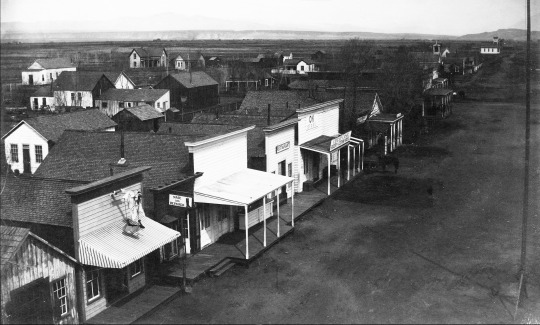
Main Street, Bishop Creek 1880 (OwensValleyHistory.com)
In Chapter 1, Tom rides down Main Street to the marshal's office (played by a grudging Severus Snape) and runs into Hermione.
Way off into the upper right you can see the steeple of the First Baptist Church on Main Street.

East Line Street, Bishop Creek (OwensValleyHistory.com)
Tom chases Hermione to Line Street, where he pushes her up against the Brown's Machine Shed, which is of course re-named to fit Lavender Brown's family.

(OwensValleyHistory.com)
Check out that snow! Sitting at 4,000 feet of elevation in the foothills of the East Sierras, the snow can get quite voluminous.
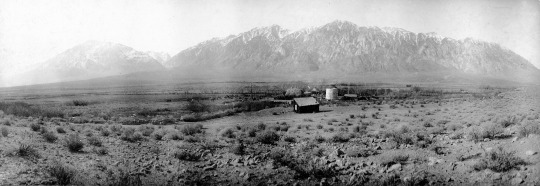
W.D. Roberts Ranch, Round Valley (OwensValleyHistory.com)
The ranch near the dry saltbeds of Owens Lake where Draco visits Harry, (by way of Mad Eye Moody) might have looked like this.
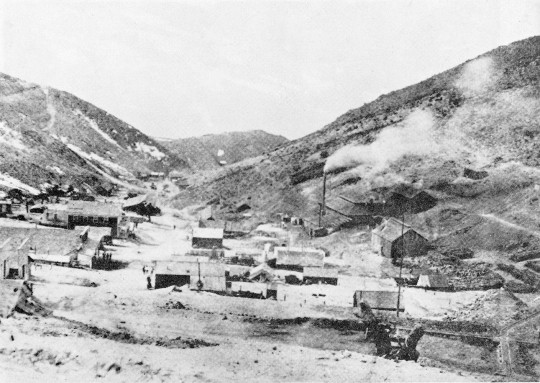
Cerro Gordo photo taken some time between 1871 - 1879 (OwensValleyHistory.com
We get a brief glimpse of the Cerro Gordo silver mine when Draco and Harry ride off into the sunset together for a night of wild debauchery. The brothels and bawdy houses within these sprawling mining towns would have perhaps been some of the only public places for late 19th-century gays to be themselves. Miss Lola's was among the more famous, and I'm struggling to find the website where I originally learned this this but I believe she hosted queer sex workers and provided space for an early LGBTQ+ scene.
The silver mine itself brought together a richly diverse group of fortune seekers. I accessed California census documents and found that while Bishop Creek was mostly white, Cerro Gordo had a much more diverse population (interestingly all marked with 'I', even Latinx names).
I did a phone interview with the Inyo Historical Society and chatted for an hour with a local historian, telling him I was getting context for a novel. (He didn't need to know that my novel was also a fanfic, hahaha.) The historian told me the mine had Mexican, Black, Chinese, and Indigenous populations working as miners, teamsters (people who drive wagons), cooks, brick masons, farm laborers and all kinds of interesting jobs related to running the mine.
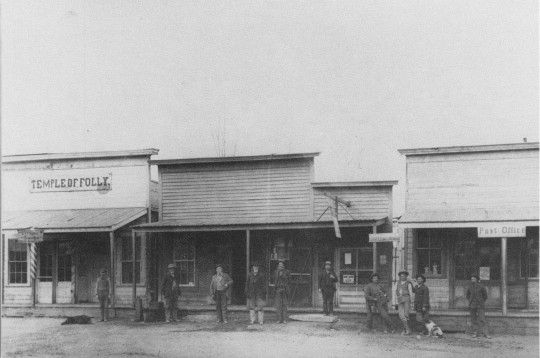
Main Street in Bishop Creek, 1878 (OwensValleyHistory.com
One thing that sticks out in my mind from the conversation with the historian is how the white and Mexican ranchers demolished the irrigation canals the Numuu Indigenous tribes had dug to create a green landscape in Owens Valley. Native Americans have been 'farming' America's landscape for thousands of years in a low-impact way. In Chapter 4, Tom muses on this detail as he's setting a wolf trap on Rosier's ranch.

Perhaps the most illuminating account of the region comes from Sarah Winnemucca, daughter of Chief Truckee (after whom the town is named). Sarah travelled as an advocate for Indigenous rights and cataloged her experience and the story of white settler colonization in her book, Life Among the Pauites: Their Wrongs and Claims which you can read for free here.
Thank you for diving into California history with me!
Read Wolfer here.
29 notes
·
View notes
Text
Ch210, Where is F. O. L. Orphanage?
⚠️ long post ⚠️
I was discussing that question with @juxl25, and I think we came up with a good choice for its location.
The only information we know for sure is that it's in Norfolk, and that it's near a river. We also know Finny and Snake took a train to a nearby town and walked to the orphanage.
We also know there's a wind pump that drains water from the surrounding marshland. There are at least four major rivers in the area used for draining the marshes: Yare, Bure, Wensum, and Ouse.
Juxl25 suggested River Yare and the historic Red Mill (the wind pump) as the area but was looking at Manor House, which is farther away, in the village (proper) of Haddiscoe, Norfolk. After some digging around, I agree with River Yare and Red Mill/Langley Detached mill (originally called Langley detached windpump...

...or Langley Detached drainage pump).
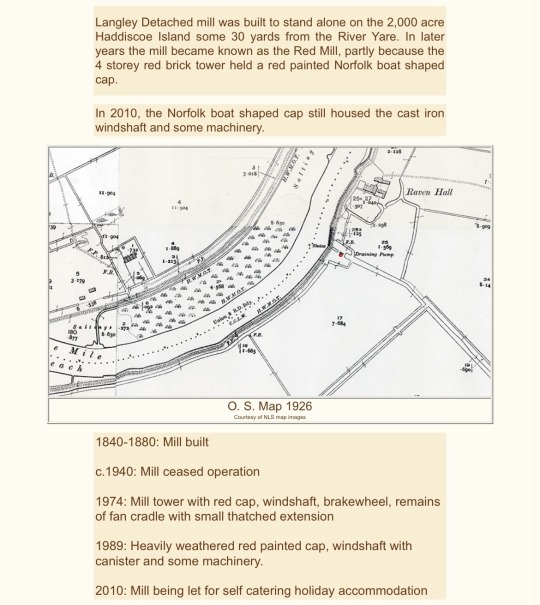
They are in an area northeast of Haddiscoe village, called Haddiscoe Island (these days), thanks to a canal added to connect River Yare and River Waveney farther inland, creating an island of the area and making the marshland there more remote/less accessible.
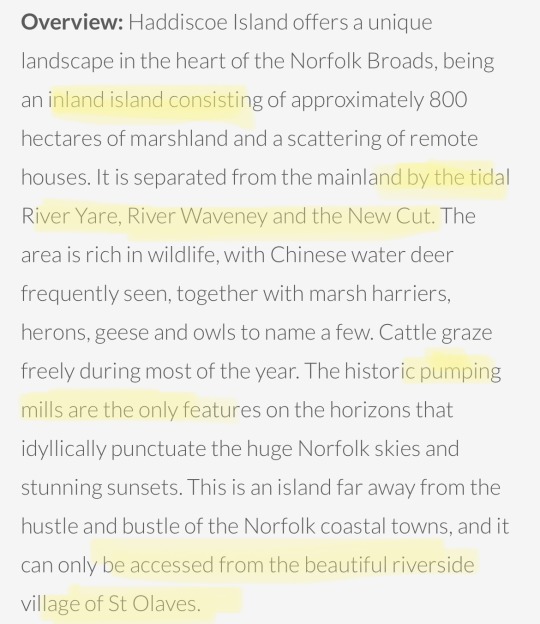
There's a historic farmhouse just east of River Yare, not far from Red Mill, called Raven Hall. And Raven Hall would be a premium location to have a secluded facility like F. O. L. Orphanage.
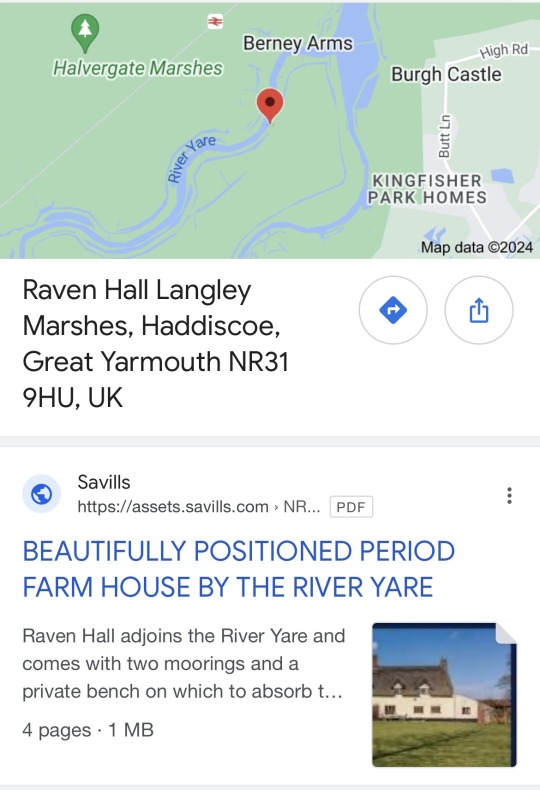
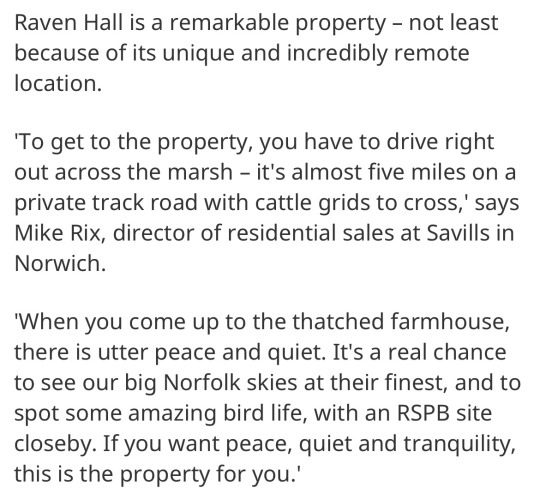
There's only one thing I don't like about the buildings shown for Raven Hall -- it's a bit farther from the drainage pump than I want it to be, and it's just a large farmhouse (almost 3000 sqft) and a long barn (almost 900 sqft). But there's a cool space just south of those buildings, which would be ideal for the main orphanage, as well as a spot for the stables/barn leading closer to the drainage pump, farther south. Here are two options for the placement of F. O. L.:
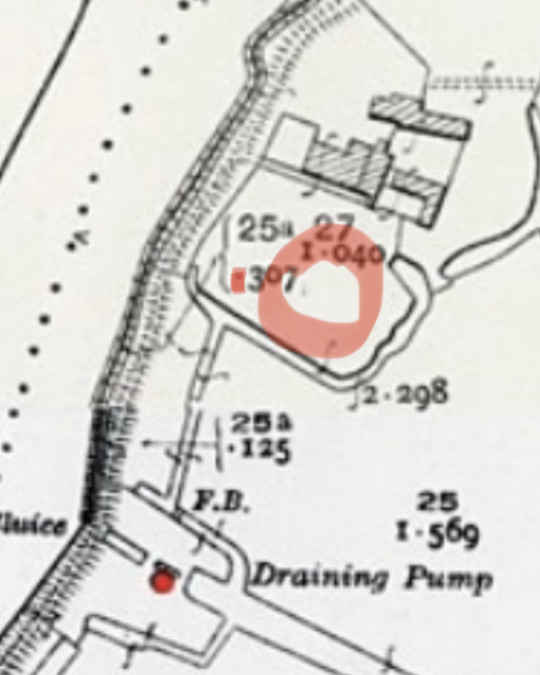
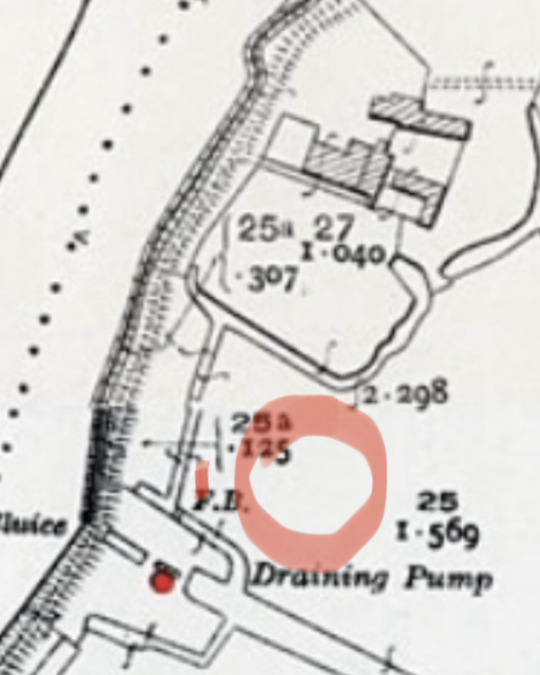
In each case, I've placed the stables to the west of the main house, as a small red rectangle (more or less), while the windpump was already marked by a red dot farther southwest. Looking at the bend of the river on Theo's image of a map of the place, the placement on the right (above) might be the better match. Then again, it could be exactly where Raven Hall is located. And Raven Hall, having been built in the 17th century (or at least 1700), is older than Red Mill (built in 1840).
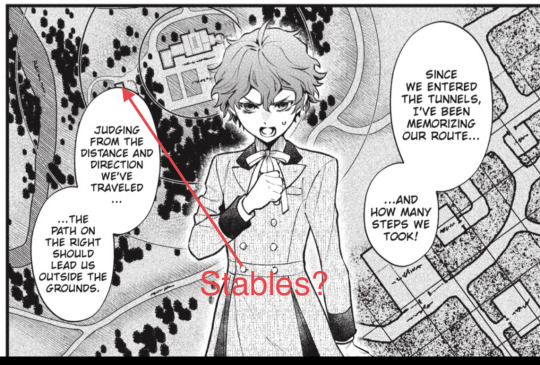
Too bad I can't see the placement of the windpump on his map, but I think it's somewhere behind the speech bubbles on the left side of the panel.
We see that the windpump at the orphanage has a low roof of some kind, and juxl25 explains that someone was probably living onsite just to maintain it full time. I did find at least one pic showing Red Mill with what could be the old maintenance shed/shelter, but it seemed to be on the wrong side. Who knows? I guess it depends on which way the sails are facing to catch the wind? But the low roof in the panel is probably just the top of some shed.


Oh, and near St Olaves, there's a train station called Haddiscoe Station. They could have got off the train there and made their way north to the orphanage by foot. Or did they hitch a ride part of the way? I'll have to go back and check.
I'm still considering one other location, not far from there, but I won't post it unless further research looks more promising.
Hey... can you imagine if all this time... F. O. L. was just some place name reference... like "Farmhouse on Langley" (Marshes)?!?
Please let these kids break the windpump and flood the tunnels.... 🙏
#black butler#kuroshitsuji#ch210#real places#historical references#norfolk#haddiscoe island#langley marshes#red mill#langley detached drainage pump#langley detached mill#langley detached windpump#theo#theodore#raven hall#theories#ideas#discussion#observation#long post#long reads#mar 19 2024#haddiscoe station
34 notes
·
View notes
Text
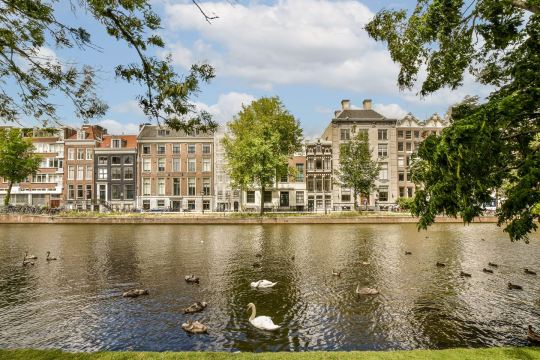
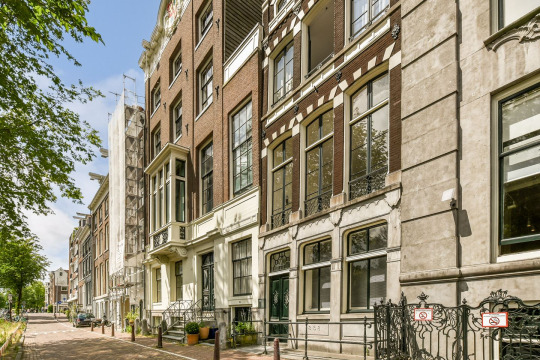
Thanks to Ingek73 for sending this amazingly beautiful historic 1685 apt. for sale on the canal in Amsterdam. The ground floor unit has 3flrs., 6bds, & 4ba. €3.5M / $3.755M
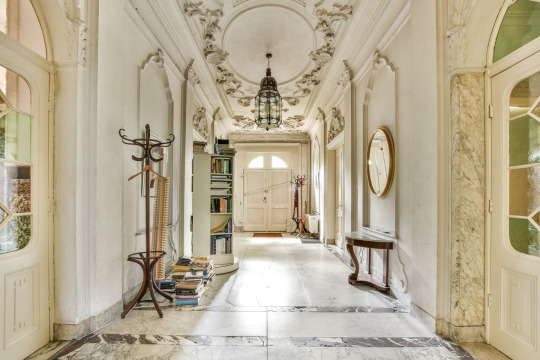
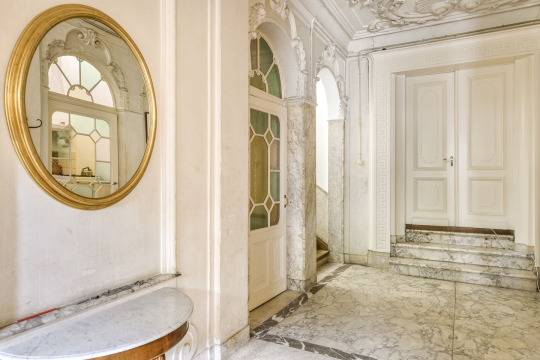
Now, this is an original entrance. It's magnificent- the marble flooring, sculpted plaster, no crazy modernization here.

The think about old plaster is that every new coat of paint further lessens the sharpness of the details.
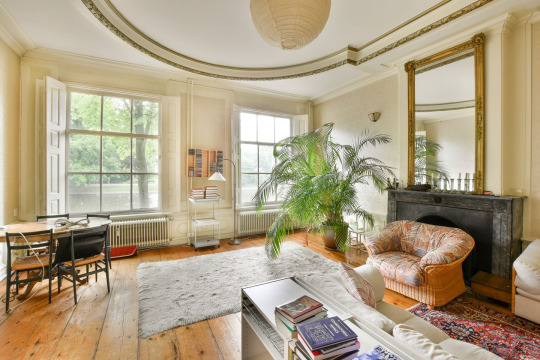

Man, I hope the new owner doesn't modernize it. Look at this fireplace.

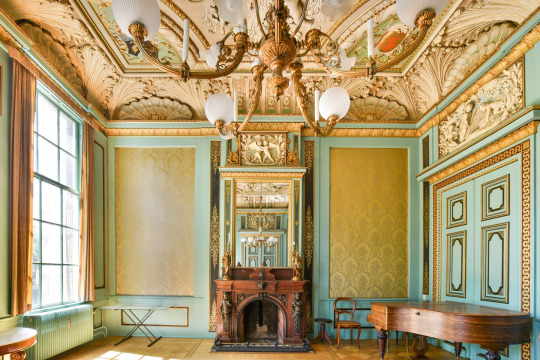
Look at this elegant room. (I wonder if the ironing board conveys.)
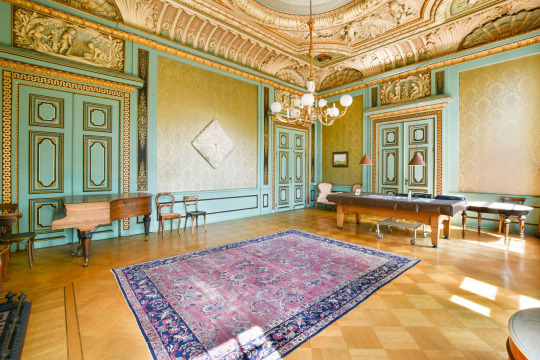
Would make some grand ballroom.

The details! It's amazing.

The great view from the windows in this room.
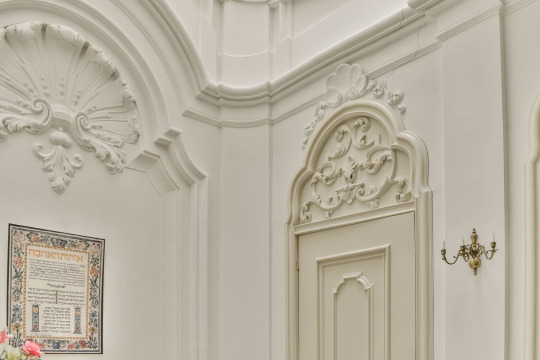
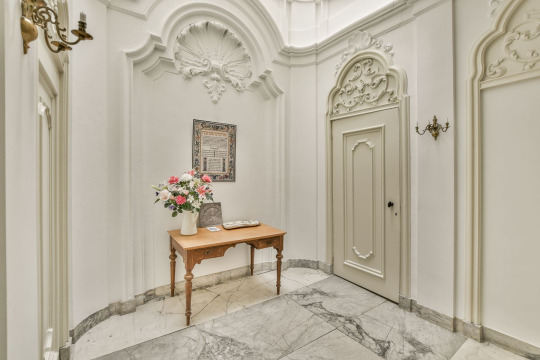
The halls are just stunning.

And, then you come to this cute kitchen with a loft.
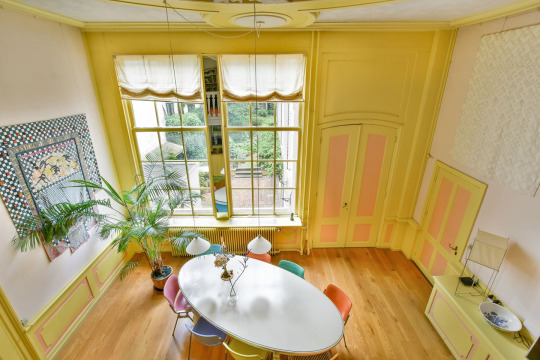
The view from the loft.

The uppermost floor is so cheery.
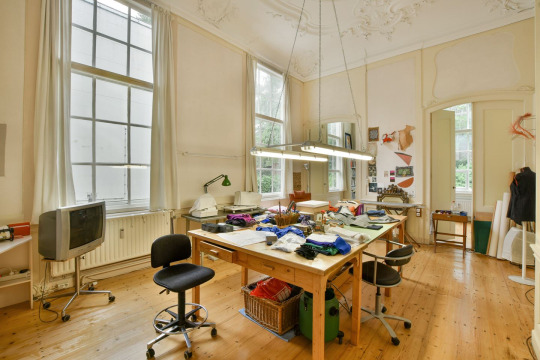
The perfect studio space.
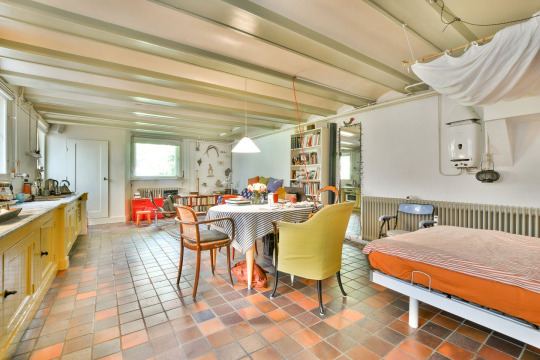
Plus a spacious studio apt. in the basement.
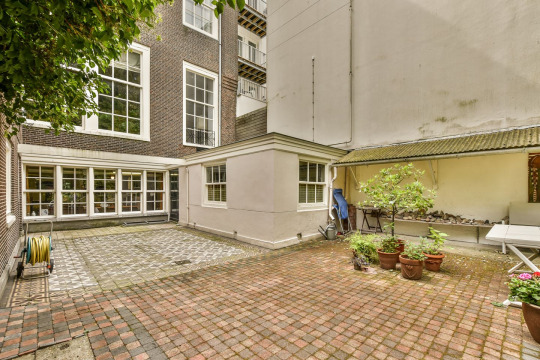
In the back is a nice large patio.
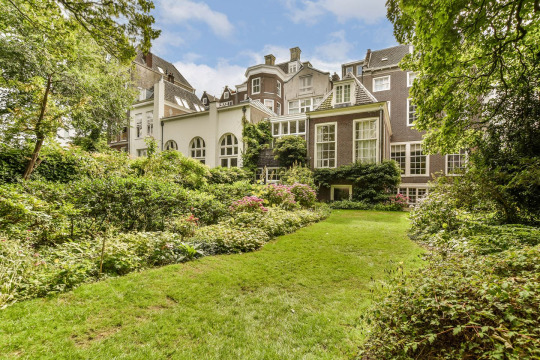


Beautiful parklike garden.
#canal house amsterdam#historic canal houses#houses#old house dreams#house tours#home tour#submissions
99 notes
·
View notes
Text





Bruges 2015 (2) (3) (4) (5) by Eugenia
Via Flickr:
(1) Augustijnenrei
(3) Begijnhof
(5) Old town of Bruges
0 notes
Note
In one of your last posts you mentioned you were studying the civil war in Vandée. Have you ever seen the rather new movie "Vaincre ou Mourir" on the topic? If yes, what do you think of it? I was very curious to give it a try, hoping it's not the usual demonisation of the revolutionary government. Not that I expect it to be portrayed positively in a movie focused on the Vendéean insurgents pov, of course...
Thanks a lot for your question! It’s the first one I've ever received, and I’m really excited to dive into it. (I might have gone a bit overboard, so grab a coffee or a drink before you tackle this beast… TLDR at the bottom…)
I watched "Vaincre ou Mourir" a couple of months ago. Before I dive into my thoughts, the man himself would like a word:
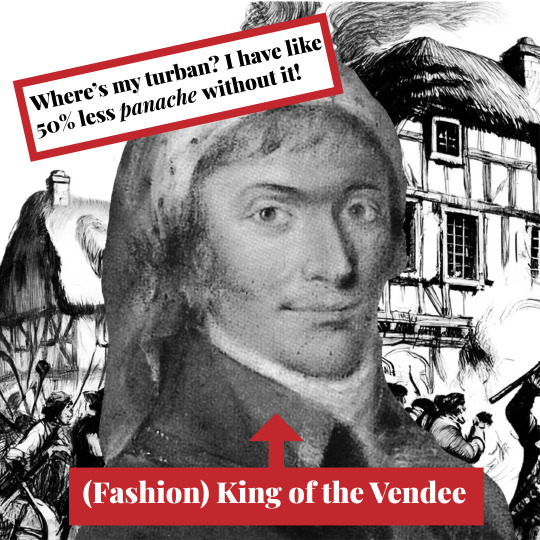
All jokes aside, have you ever been to one of those medieval theme parks where they offer a "realistic" medieval show with dinner? As a kid, every summer, my parents took me to a jousting show at an Italian theme park. We'd watch two knights fight each other for an hour while being “medieval” and munching on chicken legs without any cutlery.
That's pretty much how I felt watching this movie: it’s flashy and fun but doesn’t have much going on underneath. It makes more sense when you discover that the film was funded by Puy du Feu, a large historical theme park in Vendée.
The context
And this is the thing: despite the Canal+ distribution, most of the production is local. The Vendée itself is often defined as a memory space (1), which can lead to a community feeling a special connection to their past. This is often reflected in local traditions, commemorations, and even political leanings. I remember watching an interview from the bicentenary where some locals said they don’t celebrate the 14th of July as a matter of principle—200 years later!
It’s also worth noting that the Vendée has a history of conservative and right-leaning political preferences, and Canal+ is also a right-leaning media outlet.
The Experts
Is it a documentary? Is it a fictional film? It's hard to say in the first few minutes.
The movie attempts to project historical accuracy by introducing four experts right at the start. If a film opens with such a direct appeal to authority, I tend to scrutinise who these experts are. So, who are they?
Reynald Secher: a historian who has been a massive proponent of the Vandean genocide theory. He is very anti-Republican, and his research methodologies are rather sketchy…
Nicolas Delahaye: I don’t know much about him, but I see he publishes primarily regionally in a Vendean publishing house. That doesn’t necessarily mean he’s particularly biased, but it does mean his audience is very limited to people with specific views.
Anne Rolland-Boulestreau: a historian at the Université Catholique de l’Ouest specialising in the Vendée counter-revolution. Her articles in the Annales Historiques de la Révolution Française seem unbiased and well-researched. I own one of her books but haven't read it yet, so I can't speak to her longer-form content.
Armand Bernand: if you google de la Rochejaquelein, you will find this guy everywhere. He owns a publishing house, loves the Château de la Durbelière (2), and wrote a series of books set there. He clearly has a historical crush on M. Henri. I think he cosplayed him during some re-enactments and wrote a book about Henri’s brother Auguste.
It’s worth mentioning they either hail from Vendée or work exclusively within the region. This is my bias speaking because I’ve pretty much read all his work, but if you make a movie about the Vendee and can’t get Jean-Clément Martin to say something on camera about it, you should probably not feature any experts…
The Story
After an awkward three minutes of experts telling us how important the revolution was and introducing Charette, we get to the actual movie, which opens with a pile of bodies, burnings, a hanged person, and an awkward first-person voiceover of Charette saying that they made the Vendee into an inferno. This will be a theme for the next hour or so.
If I were to describe this film in two words, "tragedy porn" would fit. What occurred in Vendée was horrific, and its rightly violent portrayal should help viewers understand and appreciate the human and historical impact. However, the film often prioritises shock value over explaining the underlying reasons.
Charette is, by all accounts, a very compelling subject. The guy was a libertine with bucket-loads of courage and style who had a woman as an aide de camp in 1793! Despite spending 1.5 hours with him, narrated from his perspective, I would be hard-pressed to tell you what he’s actually fighting for. Is it honour? Is it revenge? Is it stubbornness? Your guess is as good as mine!
There is absolutely no character growth whatsoever. The film presents as a sequence of battles and shocking scenes narrated by a somewhat detached Charette. Remember what I said about the medieval show? This shock-value approach might work for a short performance during dinner but falls flat when stretched across an entire film.
Despite the weak script, the actors are quite good. Nothing Oscar-worthy, but they can act. The guy that plays Charette does a very good job and is quite charismatic.
The Historical Accuracy
On the whole, I can’t see glaring historical errors. It is fairly historically accurate with some minor issues. This is obviously not an exhaustive list, but there are things I noticed and jotted down:
The main one is the bizarre theory that Charette agreed to the peace of 1795 because he was promised that Louis XVII would be handed to him. This has absolutely no credible historical basis whatsoever. It’s a myth that has been propagated for over 200 years.
I’m pretty sure Charette didn’t sign the treaty of La Jaunaye. In fact, as far as I remember, no one from the insurgent side signed it.
While not a historical inaccuracy per se, it's a missed opportunity that the film often portrays Charette as the sole leader of the Vendean army. Though he mentions being one chief among many, this aspect is quickly glossed over. His historical relationship with the Catholic and Royal Army and its leaders was complex and would have been interesting to explore further. It's a shame the film likely didn't have the budget to delve into this, as it could have also demonstrated that Vendée wasn't a monolith.
The depiction of the republican army as well-equipped is somewhat exaggerated. If they were as well-appointed as shown, Carnot and Prieur (Cote D’or) would be out of a job, and Saint-Just wouldn't have needed to requisition shoes for the army.
Lastly, the film underexplains the context of why the counter-revolution started. In my opinion, it manipulatively emphasises the king's execution more than warranted, suggesting it triggered the popular uprising when it really did not. The conflict in Vendée began as a peasant revolt, where the local population was far more concerned with religious issues than royal politics. Most Vendean peasants likely couldn't name the king—they probably knew he was a Louis since there had been a Louis on the throne for 200 years, but that's about it. Their concerns were local: when parish priests who had taken the civic oath replaced their traditional priests, and the Levée en masse was decreed, forcing them to fight random Germans 600 km away for a regime threatening their way of life, they rebelled.
Is the movie anti-Republican propaganda?
To wrap up, is the film anti-Republican? Frankly, I don’t believe it is overtly so. It adopts a somewhat clichéd stance: the revolution's ideals were noble, but things eventually went too far. While I have plenty of thoughts on this—which I'll keep to myself for now—I wouldn’t say this perspective is inherently anti-Republican.
Charette is depicted as initially supportive of the revolution, which is accurate for many aristocrats, especially the minor nobility. The portrayal of Republican soldiers is balanced, with General Jean-Pierre Travot sometimes appearing more honourable than Charette. As the main character, Charette is shown as lazy, indecisive, and sometimes brutal, so the film does not attempt to heroise him. The princes, especially Artois, are also depicted negatively. So, the film isn’t overtly royalist.
Is there a specific stance against the Government (aka the CSP)? I don’t recall them being mentioned, which, again, is accurate since most Vendeeans, including the nobility, were not deeply involved in Parisian politics.
That being said, Carrier and Turreau are portrayed very negatively, and rightfully so. Republican generals are also shown as less likely to spare the "brigands" when captured, which aligns with historical accounts. The movie leans heavily on shock value, featuring hard-to-watch scenes of executions, guillotines, and drownings. Unfortunately, even the staunchest republican historians would be hard-pressed to find the evidence to call those scenes revisionists.
Beyond that, the only thing that stood out to me about the Republicans is that they made Kleber look about 60 years old.
In conclusion, is this the most accurate film ever? Certainly not. Is it counter-revolutionary propaganda? I genuinely don’t think so, and if someone claims otherwise, they’re likely being disingenuous.
TLDR:
Watched the movie "Vaincre ou Mourir," which felt like a medieval theme park show—entertaining but lacking depth, probably due to its funding by an actual historical theme park. Despite its attempt to appear historically accurate with expert interviews, the film fails to deeply explore its characters or the complexities of the Vendée region's history. While it doesn't contain major historical inaccuracies, it oversimplifies the causes and events of the Vendée uprising, focusing more on visual shock than factual explanation. Not outright anti-Republican or counter-revolutionary, but doesn't offer new insights into anything. Overall, flashy but not as informative as it could be.
Notes
A memory space is defined as a location (physical or otherwise) where memories, histories, and narratives are preserved, shared, and understood within a society or culture. Things like museums, monuments, rituals, stories and in this case a region can be memory spaces
Château de la Durbelière was the home of La Rochejaquelein
PS: Thank you again for your question! I had a lot of fun answering it.
#frev#french revolution#vendee war#vendee#charette#amateurvoltaire's essay ramblings#vaincre ou mourir#review
23 notes
·
View notes
Text

Things To Do In Tampa: A Comprehensive Guide to Florida's Gulf Coast
Tampa offers a dynamic and lively experience for visitors, showcasing a myriad of activities on Florida's Gulf Coast.
Florida is renowned for its diverse attractions, and Tampa stands out as a city designed for both entertainment and relaxation. With a captivating blend of historic architecture and modern landmarks, a culture enriched with Cuban and Spanish influences, bustling business districts, and scenic canals, Tampa emerges as a versatile destination that caters to work, exploration, and leisure.
Discover the myriad activities that Tampa has to offer with this comprehensive guide!
Things To Do In Tampa
Despite its vintage charm, Tampa boasts a multicultural atmosphere where historic buildings are being revitalized into vibrant food halls. Immerse yourself in the complete travel experience with our guide to Tampa's diverse offerings.
Discover Marine Life at The Florida Aquarium While in Tampa, Florida, don't miss the opportunity to explore The Florida Aquarium—an expansive 250,000-square-foot facility accredited by the Association of Zoos and Aquariums. As a 501 non-profit organization situated in downtown Tampa, it stands as one of the premier aquariums in the US. Witness a captivating array of sea creatures and immerse yourself in this publicly operated institution.
Location: 701 Channelside Dr, Tampa, FL 33602
Operating Hours: Open daily from 9:30 AM to 5 PM
Admission: $34.45 per person
Uncover Tampa's Past at Henry B. Plant Museum Venture into the historical realm by visiting the Henry B. Plant Museum, housed in the south wing of Plant Hall on the University of Tampa's campus. Located at 401 West Kennedy Boulevard, this museum offers insights into the Victorian lifestyle during turn-of-the-century Florida. Considered a hidden gem, it conveniently sits near hotels and restaurants around the university campus.
Location: 401 W Kennedy Blvd, Tampa, FL 33606
Operating Hours: Tuesday - Sunday from 10 AM to 5 PM (opens at 12 on Sundays)
Experience Artistic Splendor at The Tampa Theatre For a dose of cultural entertainment, make your way to The Tampa Theatre—an exquisite performing arts space in downtown Tampa. Designed by architect John Eberson, this atmospheric theatre-style movie palace hosts a variety of independent and foreign film productions. Treat yourself to a unique cinematic experience in this beautifully preserved landmark.
Location: 711 N Franklin St, Tampa, FL 33602
Operating Hours: Varies by show/screening
Relax Amid Nature at Lettuce Lake Park Nature enthusiasts will find solace in Lettuce Lake Park, a beloved green space in Tampa. Spanning 240 acres, the park offers walking paths, biking trails, and scenic benches for relaxation. Conveniently located on Fletcher Avenue between Interstate 75 and the University of South Florida, Lettuce Lake Park is complemented by the soothing presence of the Hillsborough River, providing a refreshing escape during warm spells.
Address: 6920 E Fletcher Ave, Tampa, FL 33637
Hours: Open daily from 8 AM to 7 PM
Enjoy Live Performances at The Straz Center for the Performing Arts For aficionados of the performing arts, The Straz Center offers a captivating venue for shows, screenings, and live concerts throughout the year. Originally established in 1987 as the Tampa Bay Performing Arts Center and later rebranded in 2009, this beautiful complex is situated in downtown Tampa.
Location: 1010 N Macinnes Pl, Tampa, FL 33602
Operating Hours: Varies by show/screening
Embark on a Splashy Adventure at Adventure Island For a dose of fun in Tampa, look no further than Adventure Island—a conveniently located water park northeast of Tampa, Florida, just across the street from Busch Gardens Tampa Bay. This aquatic haven covers 30 acres and offers water rides, dining options, and various attractions. Many visitors opt for a full trip, combining the thrills of Busch Gardens and Adventure Island.
Location: 10001 McKinley Dr, Tampa, FL 33612
Tickets: $29.99 per person
Experience Thrills at Busch Gardens A must-visit for adrenaline enthusiasts in Tampa, Busch Gardens Tampa Bay is the largest zoo in the region, packed with exhilarating roller coasters and over 12,000 animals. This adventure park seamlessly blends high-caliber rides, adrenaline-pumping thrills, and family-friendly recreation. For a water-themed escapade, explore Busch Gardens' Adventure Island, Tampa's exclusive water park, spanning 30 acres of tropical excitement.
Location: 10165 McKinley Dr, Tampa, FL 33612
Tickets: $84.99 per person
Unwind on the Beautiful Beaches Just a short drive away, Tampa offers access to approximately 35 miles of pristine Gulf of Mexico waters and white sand beaches on the barrier islands of St. Petersburg and Clearwater. Renowned for their exceptional sand quality and environmental preservation, standouts include Fort DeSoto Park, Caladesi Island, and Clearwater Beach. With its undeveloped coastlines, this area imparts a sense of being on a remote island.
Discover the wealth of beaches: Tampa boasts around 35 miles of white sand coastline, providing ample opportunities for relaxation and seaside enjoyment.
Discover the Glazer Children's Museum For families with kids, a visit to the Glazer Children's Museum is a must during their time in Tampa. Boasting around 20 interactive exhibits catering to children of all ages, this family-friendly museum offers an engaging experience.
Location: 110 W Gasparilla Plaza, Tampa, FL 33602
Operating Hours: Tuesday - Sunday from 9:30 AM to 5 PM
Indulge in a Beer Tasting Experience Tampa's brewing legacy dates back to 1896 when the Florida Brewing Company established itself in Ybor City's downtown. While facing challenges due to restrictions and laws, the craft beer scene experienced a resurgence with the establishment of the Tampa Bay Brewing Company a century later.
Diverse Beer Scene: Tampa boasts a thriving brewing culture, with the Florida Brewing Company being a popular choice in Ybor City.
Best Time to Explore Tampa, Florida
Tampa is at its best between September and December, offering a pleasant escape from the oppressive heat and humidity. The breezy conditions of autumn still provide warmth and sunshine, and during these months, hotels often offer enticing deals to attract visitors.
While the peak season for major attractions is from May to August, the weather can be uncomfortably humid. January through April, despite being cooler, tends to be a more expensive period for booking trips.
Optimal Transportation in Tampa
For seamless exploration of Tampa, visitors often find it beneficial to rent a car, especially if planning excursions to Clearwater and St. Pete's beachfront or the artistic enclaves of Sarasota. However, for those intending to stay within downtown or utilize the Telo Line Streetcar, walking or riding may suffice.
Given the residential and widely dispersed nature of the Bay Area, car rental costs, while subject to fluctuations based on supply and peak season factors, are generally reasonable. Commute times may be slightly extended due to the unique driving patterns in the region.
Guide to Tampa's Distinct Neighborhoods
Tampa's allure extends beyond its main attractions, inviting visitors to explore its vibrant neighborhoods that pulse with unique charm.
Hyde Park: Crafted around the time of the first Hillsborough River bridge by railroad magnate Henry B. Plant and Cuban immigrants establishing Ybor City, Hyde Park is a charming area exuding heritage and retro glamour. Nestled by the sea, with leafy tree canopies and early 20th-century brick lanes, Hyde Park features upscale Hyde Park Village, a walkable hub for dining and shopping. To the east, Bayshore Boulevard offers a waterfront promenade for biking and strolling.
Channelside District: Packed with tourist delights, the Channelside District hosts Sparkman Wharf—a riverfront entertainment venue offering microbrews, musical performances, and diverse dining options. The Florida Aquarium, home to over 8,000 species, adds to the district's allure with captivating exhibits on conservation initiatives, coral reefs, and marine life. Dolphin trips and hands-on experiences, like the No Bone Zone habitat, enhance the Channelside District's appeal.
Downtown: A blend of historical and contemporary cultural attractions defines downtown Tampa. Renowned sites such as the Florida Museum of Photographic Arts, the Tampa Museum of Art, and the Glazer Children's Museum cater to art enthusiasts and families alike. The David A. Straz, Jr. Center for the Performing Arts hosts Broadway musicals, opera-ballet performances, and musical events. Corey Hixon Waterfront Park hosts year-round outdoor events, while the Tampa Riverwalk offers a scenic stroll along the Hillsborough River, lined with diverse eateries and bars.
Dining Recommendations in Tampa
The culinary scene in Tampa Bay mirrors its diverse culture, offering indulgent beverages at beachfront bistros and taverns. Visitors can savor iconic Tampa dishes, choosing from an array of options, including haute cuisine, farm-to-table eateries, and delightful seafood and traditional Spanish meals.
Top Breakfast Spots: Samaria Cafe, Nicki's Omelette & Grill, Oxford Exchange Lunch Favorites: Oystercatchers, Ulele, Al's Finger Licking Good Bar-B-Que Dinner Hotspots: Vino E Pasta, On Swann, Wright's Gourmet House Best Bars: M. Bird, Fly Bar, The Orpheum, Bad Monkey
Where To Stay In Tampa, Florida
Tampa Bay offers a diverse range of lodging options, catering to both luxury seekers and those on business or leisure trips. Entertainment abounds, making Tampa an ideal destination for various needs.
Luxury Hotels
The Tampa Edition
Cost: Starting at $709 per night
Address: 500 Channelside Dr., Tampa, 33602
Amenities: Fitness Center, Outdoor Swimming Pool, Garden
Floridan Palace Hotel
Cost: Starting at $299 per night
Address: 905 North Florida Avenue, Tampa, FL 33602
Amenities: Fitness Center, Restaurant
Mid-Tier Hotels
Hyatt Place Downtown Tampa
Cost: Starting at $349 per night
Address: 325 N Florida Avenue, Tampa, 33602
Amenities: Fitness Center, Outdoor Swimming Pool, Restaurant
Hotel South Tampa & Suites
Cost: Starting at $199 per night
Address: 3314 South Dale Mabry, Tampa, FL 33629
Amenities: Swimming Pool, Fitness Center
Budget Hotels
Hilton Garden Inn Tampa East
Cost: Starting at $166 per night
Address: 10309 Highland Manor Drive, Tampa, FL 33610
Amenities: Restaurant, Swimming Pool
Sleep Inn & Suites Tampa South
Cost: Starting at $179 per night
Address: 6231 S Dale Mabry Highway, Tampa, 33611
Amenities: Spa and Wellness Center, Fitness Center
Visiting Tampa: Helpful Tips
Sunpass Convenience: Consider obtaining a Sunpass, a prepaid digital permit for hassle-free highway travel to various destinations.
CityPASS Savings: Opt for the Tampa Bay CityPASS, providing discounted access to the city's premier attractions. Priced at $97 for children and $107 for adults, it offers substantial savings.
Freshwater Caution: Exercise caution when encountering freshwater, especially outside designated swimming springs. Florida's waters are home to over a million alligators, emphasizing the need for vigilance.
A Day Well Spent in Tampa
For those with just 24 hours, Tampa offers a condensed yet fulfilling experience. Explore Downtown Tampa starting with the Glazer Children's and art museums. Next, embark on an adventurous journey at Busch Gardens.
As the evening unfolds, consider a visit to one of the local breweries. Hyde Park beckons with its excellent dining and shopping options, while the Channelside District provides a vibrant backdrop for live performances.
Engage in Unique Activities
Even if water sports aren't your forte, Tampa's outdoor adventures offer compelling reasons to visit. The region boasts a diverse array of outdoor activities to suit various interests.
FAQ
Q: What is Tampa known for? Tampa is renowned for attractions such as the Florida Aquarium, the exhilarating Busch Gardens, the vibrant Ybor City, and being the birthplace of the Cuban sandwich. Additionally, the city is celebrated for its lush gardens, cigar manufacturing heritage, modern museums, fine dining establishments, and picturesque sidewalks.
Q: Is Tampa better than Orlando? Tampa is preferred by beach enthusiasts due to its proximity to the coast and the surrounding Tampa Bay. Orlando, another city in Central Florida, is favored by those who are fans of Universal and Disney attractions.
Q: Is Tampa Riverwalk worth visiting? Absolutely! Tampa Riverwalk is a must-visit attraction, offering a scenic stroll along the Garrison Channel and Hillsborough River. With water-based activities, beachfront restaurants, museums, and year-round festivals, it provides an enriching and enjoyable experience.
39 notes
·
View notes
Note
Okay here are some antics I think the BTR boys would get up to source: I’m a certified minnesotan who goes to duluth a few times a year
-the main mall in duluth is the miller hill mall. Totally generic, average mall, but it’s pretty much the main thing teens will do during the winter. I think they would get banned for life by starting a food fight in the cafeteria and they’d keep coming up with disguises to use and then subsequently getting banned again. there's also a mall called fitgers which is pretty cool because it used to be a brewery. i've only been there a few times so idk as much about it alas.
-speaking of malls, at some point they would come to minneapolis (i assume for say a hockey trip for example) and go to the mall of america. It’s the biggest mall in the western hemisphere and theres a zillion stores so you can imagine all the antics there. But in particular, they have an amusement park. It is currently nickelodeon universe but i think at the time it would’ve still been camp snoopy. I think they would have gotten banned by climbing up the rides and breaking something.
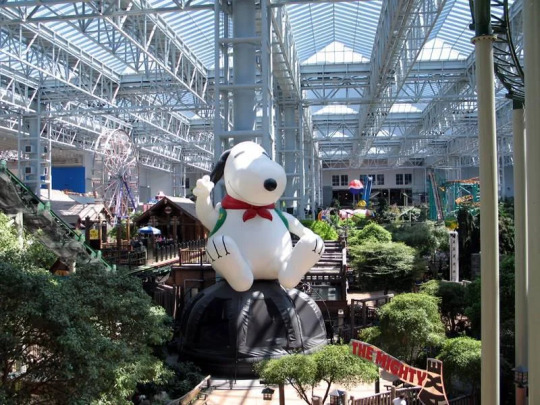
-While in minneapolis, i think they would’ve gone to the sculpture garden (it’s free). I think they would somehow make the cherry break off from the famous spoonbridge and cherry fountain

-They would also go to the science museum for sure. I think they would manage to knock over a dinosaur skeleton. But also they’d also just have all kinds of general antics. For example, they have a thing that blasts you with air to replicate sneezing and they’d 100% do that to each other. I can elaborate on this more I went to this museum sooo much as a kid but this is already gonna be so long lmao.

-While still in the area, they’d go to Valleyfair, which is like the main amusement park around here. Again, generic amusement park antics. But I also think they’d come around halloween, when they do ValleyScare, which is when they have like, haunted houses and scare actors and whatnot
-Going back to duluth, they would DEFINITELY spend time around canal park in the warmer months. It’s like this little touristy/shopping center in duluth. There’s a bunch of little shops and restaurants and a couple museums (including the irvin museum which is like a big ass historic boat and also as an aside they do like a haunted ship thing around halloween) around there. There’s a lakewalk they could walk along, there’s a lighthouse you can walk up to, and also there’s this like semi-submerged structure in the lake that people like to jump off of in the summer.

-Also in the canal park area is the aerial lift bridge. The whole bridge lifts up when boats are gonna pass under. The guys would 100% get in trouble for trying to stay on the bridge while it’s going up

-Theres also this like, family fun center in canal park called adventure zone that i remember going to as a kid. it has like, an arcade and laser tag and stuff like that. obviously they would get kicked out of there almost immediately

-Theres a tower in duluth called enger tower that at least one of them would definitely fall out of and break an arm or something
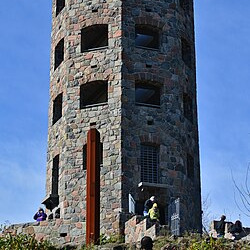
-there’s a famous mansion called the glensheen mansion. Notoriously, there were some murders that happened there and tour guides aren’t supposed to talk about it during the tours (they’re usually okay fielding questions about after the tour) so I would imagine they would pester the poor tour guide about the murders/ghosts until the guide snapped asjhds
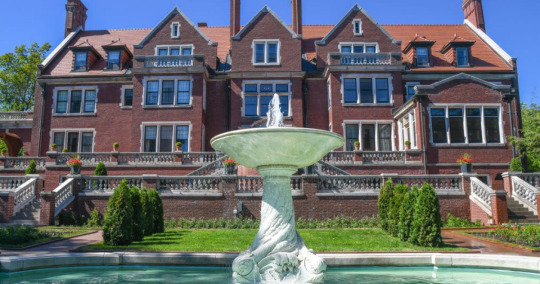
-less like, antic-y, but there used to be record shop called electric fetus that they probably would have gone to
-i think they would’ve been banned from the lake superior zoo for trying to pet the animals or something but i suppose that could happen at any zoo
- the downtown duluth area is on a really steep hill so i imagine in winter after it snowed they’d try to sled down it and almost get hit by cars

-Grandma’s marathon ends in canal park, so i think they’d fake like they ran the whole marathon to impress girls or something sadjhhka
-there are a lot of parks including state parks so i could imagine them getting like lost in the woods or whatever. in general in minnesota/duluth theres a lot of outdoorsy stuff like skiing, hiking, canoeing, kayaking, boating, jetskiing, ATVing, snowmobiling, that sort of stuff. fishing is really big because we have a zillion lakes lol. i was always a dork who just wanted to stay inside as a teen lol but teenage boys i knew growing up tended towards doing those outdoors stuff.
-an aside but i know the guys are hockey players so it's probably good to know the minnesota hockey team is the minnesota wild. im not a big hockey person but my understanding is they are incredibly mid.
hope this helps with your band yaoi bestie <3 obviously this is a non-exhaustive list but this is the big stuff that came to mind.
@partiallypearl @cant-get-enough-btr-forever @myloveforhergoeson @mpregloganmitchell @mpregkendallknight @btr-rewatch @bishounenbtr tagging you guys because you might be interested in their minnesota antics from a reliable source (my good friend penny)
penny i love love that you wrote all this i felt like i was taking a little tour with you around the cities <333
THEY HAD CAMP SNOOPY ARE YOU KIDDING ME... that's adorable, they definetly would've managed to catch that big snoopy on fire orrr get really trashed one night and try to steal it skdjsh (it seems huge on that picture so the idea of the guys clumsily trying to climb it to take it with them is cracking me up).
i remember you mentioning the spoonbridge once!! don't remember the context lol, i didn't know it was an entire garden waow.. yeah that cherry would suffer some damage with them around for sure.
that science museum looks like so much fun 😭 i think logan would ask them to go and they'd do it for him but end up having a blast together. if you do feel like telling more about what you liked about it as a kid please do bc im charmed by this place.
that picture of canal park's submerged structure is making me crazy bc those guys jumping into the lake could totally be them... one thing in general about these guys is they canonically Love the outdoors, they like to camp, the beach and they seemed to take well to california's warmer weather, i can see them taking any chance they got back home to enjoy the sun and the water without freezing their toes off lol. they also wanted to take snowboarding lessons according to the show (but james' mom made them take ballet instead <3), they'd take advantage of any change of adrenaline. the rush, one could say 🤨
THAT MANSION!! idk if you got that far but there's a ghost episode in season 1, and they obviously try to bust it. this would be right up their alley. i can see them plotting to split during the tour so they can catch that sucker (kendall's plan, brought on by carlos' request/begging skdjshs)
fun fact!!

but the fact that they're mid makes it so much funnier to me 😭😭😭 another mutual also told me the maple leafs are kinda hated? i honestly can see kendall choosing these teams out of spite as a young teen skdjdhd "oh you think they suck? well now i want in even more :)"
I LOVE THISSSSS thank you for taking the time to write it bestie ❤️❤️
19 notes
·
View notes